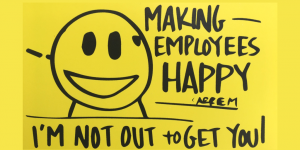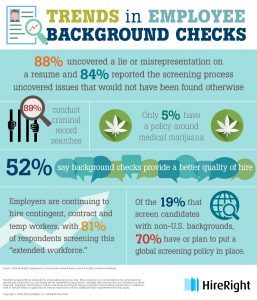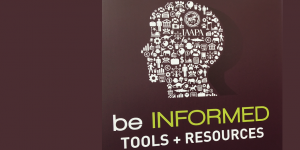Sharlyn J. Lauby's Blog, page 145
December 22, 2016
Turn Your Morning Commute Into a Learning Habit – #PeopleFirstPodcast
I’ve never spoken to an HR professional who had a lot of spare time on their hands. There’s always a new piece of legislation to research or project to implement. Finding time to gain some new insights can often get pushed down on the priority list.
I believe that’s why conferences are so important. It allows someone to take a couple of days and totally immerse themselves into learning. But we can’t always get away for conferences – sometimes the budget doesn’t allow. So, we have to find ways to turn learning into a daily habit.
I’m so grateful for the people who read HR Bartender. You take time out of your already busy schedule to read, share, and comment. Another way to grab a daily dose of learning is via podcasts.
I had the opportunity to work with our friends at Ultimate Software on a podcast mini-series. Eight episodes totally focused on helping HR professionals thrive in their careers and the HCM cloud. Each episode is roughly 20 minutes, so it’s perfect for a morning or afternoon commute.
The Impact of Culture on the Business: Chief People Officer for Ultimate Software Viv Maza and SHRM Board Member Steve Browne kick off the series with a discussion on how company culture impacts business health and success.
Helping Managers Become Better Leaders: Managers and leaders are the ultimate key to increasing employee retention. Learn from Pat Pickren, senior director of product strategy at Ultimate Software, and Jennifer McClure, founder of Unbridled Talent, proven ways to use HCM technology in your development programs.
Creating a People-First User Experience: This was a super interesting show! Hear how technology design impacts people in the workplace from a UX manager and lead ethnographer, whose roles are to design industry-leading HR technology.
Compliance and Benefits: Taking Care of Employees with Technology: I sat down with Maria Luther, director of compliance at Ultimate Software to discuss how benefits and compliance technology play a role in employee engagement.
The Impact of the Candidate Experience: Organizations can create, maintain, and measure a positive candidate experience to improve employee retention. Join Sarah Brennan, principal advisor of Accelir, and Martin Hartshorne, vice president of products for Ultimate Software for this valuable conversation.
The Impact of the Onboarding Experience: Ryan Bergstrom, senior director of products at Ultimate Software, and Robin Schooling, vice president of HR at Hollywood Casino Baton Rouge share some best practices for sourcing, selecting, and welcoming people into your organization.
Improving the Employee Experience at Work: Laura Lee Gentry, vice president of talent at Ultimate Software, and Mike VanDervort, executive director at CUE, Inc., discuss how organizations can create, implement, and communicate change within organizations to support technological and talent advances.
Effectively Implementing Change within an Organization: Managers and leaders must be able to determine whether employees are engaged before they can impact the work environment. Cecile Leroux, vice president of innovation at Ultimate Software, and Janine Truitt, chief innovations officer at Talent Think Innovations, discuss how goal setting and feedback can lead to increased engagement.
I hope you enjoy the series as much as I enjoyed recording it. For those of you with an iTunes account, you can download the series there. Cheers!
The post Turn Your Morning Commute Into a Learning Habit – #PeopleFirstPodcast appeared first on hr bartender.






December 20, 2016
Administration is Killing Productivity – #WorkEngaged
(Editor’s Note: Today’s post is brought to you by our friends at Kronos , a leading provider of workforce management and human capital management cloud solutions. Mark your calendars! The Society for Human Resource Management (SHRM) and Kronos are hosting a special #NextChat on January 4, 2017 at 3p Eastern, to discuss creating organizational cultures where employees are working more engaged. Hope you can join the conversation. Enjoy the post!)
We’ve spent a lot of time on this blog talking about engagement. And engagement is important. Managers need to build and maintain positive, trusting relationships with employees. Employees need to feel connected to their work.
However, organizations could be undermining their engagement and productivity efforts with too much administration, according to a new research report from Kronos titled “The $687B Question.” While I would encourage you to download the full report for details, the big takeaway is that the estimated potential opportunity cost of time wasted on unnecessary administration is – you guessed it – $687 billion. Which equates to roughly $4,500 per employee per year.
One of the most fascinating aspects for me was the realization this isn’t just a U.S. problem. Unnecessary administration is a global issue. In every country surveyed (Australia, Belgium, France, Germany, Netherlands, U.K., Canada, Mexico, U.S., India, and China), most respondents said their working life was not too complicated. However, the margins weren’t significant. On average, 54 percent felt their working life wasn’t complicated compared to 46 percent who did.
The 5 Top Challenges Facing Organizations
When you look at what the specific issues are, the areas of difficulty (and complexity) were similar across countries as well. The top difficulties (with over 50% of respondents in each country rating it as an issue) were:
Not enough staff. It’s true – recruiting has gotten tougher. Organizations are going to have to step up their sourcing strategies to find the best talent. Even if that means developing talent from within. Recruiting needs to be more about action and less about paperwork.
Poor technology/lack of automation. When most adults conduct their personal lives on smartphones and tablets, they expect the companies they work for to have current technology. That includes automating processes like recruiting, performance management, and growing opportunities for employee self-service.
Management pressure. Yes, the numbers are important and management is tasked with making the numbers. But making the numbers at the expense of people is the same as stepping over dollars to pick up quarters. Managers need time to manage people as well as processes.
Maintaining consistent high levels of customer service during busy periods. Employees should not be torn about serving the customer. Organizations exist because of their customers. Reducing administration gives employees more time to sell more products/services and resolve customer issues.
Heavy/unrealistic workload. Just because recruiting is tougher doesn’t mean that current employees can pick up all the slack. That is not a sustainable business strategy. Organizations need to develop contingent worker strategies to maintain productivity.
So, what’s the productivity solution? Well for starters, organizations need to spend less time on administration and more time on communication. Nearly three out of every four employees surveyed (73 percent) said better communication with management will help them feel more engaged and stay with the company. Specifically, employees said they wanted more communication in three areas:
The company’s direction and goals,
The employee’s future with the organization, and
Management recognition for their efforts.
I think it’s also important to note that managers are employees too! There’s a lot of talk about “managers need to do this…” and “managers need to do that…” Organizations also need to make sure managers are freed from administration burden so they can dedicate more time to value adding activities, like communicating with their teams (as well as training, customer service, etc.) Taking care of management administration can mitigate and minimize many of those top challenges employees identified.
For Engagement, Employees Need to Feel Connected to Their Work #WorkEngagedClick To Tweet
Employee engagement and productivity is connected to the entire organization. While it starts with the manager and employee relationship, it also involves business functions such as staffing, technology, and operations. The less time that managers and employees have to focus on administration; the more time they have to focus on the business, developing their people, and their customers’ needs.
If you want to take a deep dive into the data, you can download the full report or listen to the results via webinar. And remember to mark your calendars now for a special SHRM #NextChat on January 4, 2017 at 3p Eastern, where SHRM and Kronos will host a conversation about organizational cultures where employees are working more engaged. (Oh, and if you’re not familiar with a Twitter Chat, here’s a quick video to explain.)
The post Administration is Killing Productivity – #WorkEngaged appeared first on hr bartender.






December 18, 2016
HR is Moving from People Science to Data Science – About People
One of the things that I love about being in human resources is that the profession is constantly evolving. During this year’s HR Technology Conference, closing keynote speaker Dr. Peter Cappelli, professor of management at The Wharton School at the University of Pennsylvania, pointed out that HR used to be filled with industrial and organizational psychologists and today, HR jobs are requiring data science. His comment made me realize that one of the changes HR is experiencing is a move from being a “people science” to being “data science about people.”
That doesn’t necessarily mean that HR is giving up it’s “human” component. To the contrary, it means HR has the ability to create partnerships where it matters most. Cappelli shared a process that highlights the several partnerships that could exist.
People and organizations partner to create big data.
Organizations partner to offer better products and solutions to candidates (and customers.)
Companies partner with solution providers to be more productive in the workplace.
Employees partner with organizations to deliver effectively and efficiently to customers.
Customers partner with their favorite companies to buy stuff (and refer others.)
And the cycle happens all over again.
My takeaway from Cappelli’s session is that using technology wisely is the key to successfully transitioning HR from a people science to a data science. The key word being wisely. Technology makes a lot of things possible. But let’s face it, sometimes we don’t use technology because it’s not always helpful. Or it’s too expensive. Simply because technology exists doesn’t mean it’s going to change behavior.
Cappelli used the videocassette recorder (aka VCR) as an example. The VCR didn’t disrupt technology because it was too hard to program our favorite television shows. It wasn’t able to disrupt technology because it was simply just good enough. People still wanted to see movies in theaters. The VCR picture quality was meh. The technology was helpful; just not helpful enough.
There are also other reasons that inhibit the use of technology, such as cost. We don’t use sophisticated artificial intelligence (AI) today because it’s still too expensive. We are also constantly dealing with “hacks” developed by regular people that make the current technology irrelevant.
If we want to create lasting change in our organizations, we must be prepared to create something that matters to users, make it intuitive, and give it time to be adopted organically. I thought the mention of a time component in Cappelli’s session was particularly interesting. HR has been criticized in the past for not adopting technology fast enough. I had the opportunity to ask Dr. Cappelli about it. “I think there are worse things than adopting tech quickly. It is better to adopt it carefully. I don’t know that there is a particular tech to adopt, I think it has more to do with the process we should use to choose, and that has more to do with thinking carefully about needs, trying pilots, and so forth.”
Which brings us back to building partnerships and the essential ingredients to creating them. Successful partnerships must:
Be appealing to all parties
Feel trusting, comfortable, and not forced
Make people productive
Be supported by business – either as a customer or an employee
When it comes to the role of human resources in the business, there’s great value in technology and data science. It can provide data that drives better solutions for candidates and employees. But just because technology exists doesn’t mean it’s right for the business. This is where developing successful partnerships is essential.
Businesses are successful when they achieve their goals. People use data to make business decisions and set goals. It’s the technology partnership that gets people the data to create business success.
Image captured by Sharlyn Lauby at the 2016 HR Technology Conference in Chicago, IL
The post HR is Moving from People Science to Data Science – About People appeared first on hr bartender.






December 16, 2016
The Law of the Instrument – Friday Distraction
(Editor’s Note: Today’s post is brought to you by our friends at Kronos , a leading provider of workforce management and human capital management cloud solutions. They recently announced that they had once again been named a Top Place to Work by The Boston Globe in the newspaper’s ninth-annual employee-based survey project. Congrats to Kronos and enjoy the post!)
There’s a popular phrase attributed to Abraham Maslow that says, “If the only tool you have is a hammer, everything looks like a nail.” It’s also known as the law of the instrument, a reference to over-reliance on a single tool.
When I saw this Time Well Spent from our friends at Kronos, I was immediately reminded of Maslow’s hammer comment. We need choose the tools we work with carefully.
There are some tools that we should rely upon often because they’re flexible to many situations and produce results. I’d like to think the SMART acronym falls into this category. We can use it in project management, goal setting, and even meeting minutes. But even then, we have to be careful. New tools could work better, faster, or both.
Then, there are other tools that we should use only for their intended purpose. The first one that comes to mind are assessments. They are designed and validated for a specific purpose. Even if we love the results, it would be inappropriate to use the assessment for activities it’s not properly aligned with.
I know it’s very tempting to reach for our familiar instrument or favorite tools. Work is crazy busy. Our plates are full. There’s no time to just explore and learn. But somehow we have to find time to test drive new ways of doing things. Even if it’s for 10 minutes a day.
The good news is we can ask others for help. We can read blogs to learn about new tools. We can crowdsource solutions using social media and community. Every time we want to explore a new tool, we don’t need to start at the beginning. Our network can help us.
The post The Law of the Instrument – Friday Distraction appeared first on hr bartender.






December 15, 2016
Employee Resignation and Last Day of Work – Ask #HR Bartender
Dates are important. For example, an employee’s start date matters for benefits eligibility. Another date that’s important is an employee’s last day with the company. Today’s reader note is focused on the topic.
Hi. I had a quick question that I was wondering if you would have insight on as I could not find a similar situation online. I put in my resignation to my employer on Tuesday and offered my last day to be ten (10) days later.
However, (out of spite) my employer said they would not need me and my last day would be three days after I gave notice. In my official resignation letter, I noted that I offered to stay longer but they declined the offer.
In reply via e-mail, my employer said they would pay me until the last day I gave on my resignation letter but I do not need to come in. When are they expected to give me my final paycheck? Is my last day the day I worked or the day I got paid? I was unclear how that worked. If you had some insight, that would be great! Thank you!!
To help us understand more about resignations and final paychecks, I reached out to Andrea W.S. Paris, an attorney focused on resolving business disputes in California. She’s helped us before on a post about the differences between where employees live and work.
I’m delighted Andrea agreed to share her knowledge with us. Please remember that her comments should not be construed as legal advice or as pertaining to any specific factual situations. If you have detailed questions, they should be addressed directly with your friendly neighborhood labor attorney.
Andrea, we don’t know what the company policy is regarding resignations. But in a general sense, why should employees give the recommended amount of notice?
 [Paris] I can only speak to California’s laws on this issue. When the employee is at-will, by definition, either party could terminate the relationship at any time. So, the law here does not require notice by either party. However, giving an employer notice allows the relationship to end amicably and gives the employer the courtesy of planning for an employee’s departure, making sure that someone else knows what is left to do and ensuring that tasks and projects get done once you leave.
[Paris] I can only speak to California’s laws on this issue. When the employee is at-will, by definition, either party could terminate the relationship at any time. So, the law here does not require notice by either party. However, giving an employer notice allows the relationship to end amicably and gives the employer the courtesy of planning for an employee’s departure, making sure that someone else knows what is left to do and ensuring that tasks and projects get done once you leave.
On the other hand, an employer who believes that the relationship will end amicably may also give the employee notice and request that an employee stay to assist with the transition for a period of time. But to reiterate, unless there is a written agreement that alters the at-will relationship, there is no requirement for notice.
The reader in this note seems to feel that the employer isn’t having them work their notice out of spite. I’ve worked in industries where this employer’s actions were commonplace (highly competitive industries or positions.) How should an employee interpret not working out their notice?
[Paris] Some employers choose not to have employees work until the end of their notice period for various reasons:
Concern that the employee may access, copy, and/or take confidential, proprietary, or trade secret information; or
The perception that employees who have one foot out the door are no longer committed to the company and would therefore be unproductive at work; or
The negative effect that having the employee continue to work may have on the morale of other employees.
It’s usually not personal but purely a business decision and, in those situations, the employer is not obligated to pay the employee past the last day the employee works.
When is the employee’s last day: their last working day OR the last day they were paid? And why is this important?
[Paris] The employee’s last day is the last day of his/her employment. The reader’s description of the situation is unclear because the employer could have said either: “Your effective termination date is 3 days from today” or “Your effective termination date is in 2 weeks but we ask that you not come into the office after 3 days.” The last day of employment usually triggers requirements related to when the final payment of wages are due and the termination of various benefits.
I know the rules are different in each state about resignation and when final paychecks are issued. Where can an employee find this information?
[Paris] I recommend checking the website of your state’s administrative body that enforces the state’s labor and employment laws.
My thanks to Andrea for sharing her experience with us. Be sure to follow her on Twitter at @AndreaParisLaw and check out her blog. The way an employee leaves the organization is just as important as the welcome they receive on Day One. Even if both the employee and employer are somewhat happy the relationship is ending. That includes making sure a departing employee’s final pay is accurate.
Image compiled by Sharlyn Lauby after speaking at the 2016 SHRM Annual Conference in Washington, DC
The post Employee Resignation and Last Day of Work – Ask #HR Bartender appeared first on hr bartender.






December 13, 2016
Performance Management 2017: Companies Must Become Agile
(Editor’s Note: Today’s post is brought to you by our friends at SilkRoad , the world’s leader in Talent Activation, which transforms traditional talent management and employee engagement technology into a continuum of experiences for activating employees along their journeys—from start to finish. Check out their new eBook, “ Seeking Agility in Performance Management ”, which reports on the survey results from over 200 HR leaders in this important area. Enjoy the post!)
Today’s workers expect change. Specifically, they expect to have the ability to change their goals as business needs change. They also expect to make changes using technology. And that technology solution should mirror the experience they have in their personal lives – it should be intuitive, flexible, relevant, and current.
When it comes to the current component, not only should technology be up-to-date but it needs to provide current feedback. For example, when I deposit a check using my banking app, it tells me immediately that the transaction was successful. Same when I purchase something using my tablet. The modern workforce wants that type of feedback about their performance.
Regular performance feedback isn’t a Millennial thing. Every employee wants to know where they stand. Performance feedback should never be a surprise.
Agile Performance Management Fits the Modern Workplace
Agile Performance Management takes the best of our traditional performance management process and combines it with the needs of today. It provides a structure that managers and employees want so the process remains fair. It also includes the documentation aspect necessary to support job changes and promotions.
It takes traditional performance management one step further by making the process technology driven, which allows for the real-time feedback conversations that employees want to move to the forefront. Bob Kelleher, president of The Employee Engagement Group, explained why the real-time feedback piece is so important. “Waiting once a year (for a performance review) doesn’t work. It’s time to move to real-time pay for performance, with frequent touch points between the manager and employee.”
4 Key Elements of Agile Performance Management
As we move into 2017, it’s the right time to introduce agile performance management. There are four key elements to bringing agile in line with current performance management processes.
Regular performance conversations. Most organizations have some mechanism in place requiring managers and employees to meet once or twice a year. With agile performance management, employees and managers meet more often. The timeliness of performance feedback helps the employee perform at a higher level.
Peer-based feedback. In addition to increased manager feedback, employees learn how to provide each other with performance feedback. This can be just as valuable – if not more so – than manager feedback. Employees collaborate with colleagues every day and need positive working relationships with their peers.
Focus on current and future projects. More frequent performance conversations mean less time is spent rehashing old behavior. Employees and managers already know what happened in the past. The conversations are spent on future performance, talking about how to accomplish goals.
Training at every level. Every employee becomes skilled in delivering performance-related feedback. This helps employees take ownership of their career development.
The nice part about implementing agile performance management into the organization is the ability to phase-in these key elements. Phased implementations can be very successful and Agile Performance Management allows the flexibility to introduce the entire process or each piece separately.
Agile Performance Management Leads to Talent Activation
Organizations must create processes that result in having the best talent in the right positions. Those processes need to include creating an environment where employees feel empowered to ask for feedback and the training/development they need to be successful. When employees are engaged with their work, their performance improves and organizations begin to set the pace rather than react to the pace of the market.
We all understand the opportunity cost of not being agile. Think of companies like Uber, Airbnb, and the new Amazon app-based grocery stores. These companies shouldn’t have been able to disrupt the way that they did had “legacy” brands kept up with or innovated within their respective spaces. Increased agility enables organizations to increase the speed at which they conduct business and innovate, which improves the bottom-line.
If you want to learn more about Agile Performance Management, visit the SilkRoad website and request a demo. You can also download their latest white paper, “Transforming to Agile Performance: Big Benefits, Practical Roadmap.”
P.S. I know it’s last minute, but I hope you can join me and SilkRoad for a webinar tomorrow (December 14) at 2p Eastern on “Aligning Performance Management with Business Strategy.” If you can’t make it, go ahead and register to get a copy of the archive.
The post Performance Management 2017: Companies Must Become Agile appeared first on hr bartender.






December 11, 2016
Employee Perceptions of Time Are Important
Earlier this year, I heard an executive say, “Silicon Valley doesn’t think in terms of years. They think in terms of days/weeks/months.” While I understand Silicon Valley doesn’t rule the world, they do produce much of the technology that drives business today.
Which means their perception of time is important. Because their perception of time drives the way they design the technology we use. We might not like the idea that our phones and computers don’t last forever, but we do have to figure out how to deal with it. Same with software. For example, we might not like it when Facebook or Google tweaks their algorithm, but if we want to continue using their software, then we have to know how to manage it.
But today’s post isn’t about Apple or LinkedIn or Microsoft…or any of those technology companies.
It’s about taking their concepts about time and applying it to our workforces.
What do your employees think short-term and long-term mean?
What does senior management think short-term and long-term mean?
Is everyone on the same page?
We talk with employees on a regular basis about time. Short-term goals. Long-term career plans. Does that mean weeks, months, or years? I can see employees getting really frustrated if they were asked to take on a responsibility “short-term” and it ends up being years. Or being asked to commit to a “long-term” project only to have it abandoned after a few months.
The senior management team also talks in terms of time. Long-term results. Short-term objectives. Sometimes they will even talk about medium-range goals. When management communicates, is it clear the results will take 1-year, 5-years, and 10-years?
Finally, do all of those time frames align? Ideally, the company should set short-, medium-, and long-term goals. Talent management strategies should align so the organization has the right people at the right moment with the right skills to accomplish those goals. Employees should be engaged throughout each respective time period, working toward being ready for those opportunities when they come available.
Timing is a critical ingredient for our business success.Click To Tweet
But I don’t see how that can happen if senior management thinks long-term is 10 years and employees think it’s 5 years. Timing is a critical ingredient for our business success. Organizations have to define it and make it a part of their culture. Because not only should everyone be working toward the same goals, but they should be working at the same pace.
Image captured by Sharlyn Lauby after speaking at the 2016 MBTI Users Conference in San Francisco, CA
The post Employee Perceptions of Time Are Important appeared first on hr bartender.






December 9, 2016
Background Checks Provide a Better Quality of Hire [infographic] – Friday Distraction
We’ve written before about the shift to a candidate’s job market. Recruiting the best talent continues to be tough. But just because recruiting is a challenge doesn’t mean that organizations should be lax in their hiring practices. In fact, one could argue it’s a case for strengthening them.
Case in point: According to the 2016 HireRight Employment Screening Benchmark Report, eighty-eight percent (88%) of companies surveyed uncovered a lie or misrepresentation on a resume that they wouldn’t have discovered if it hadn’t been for the background check process. As such, fifty-two percent (52%) felt that background checks improved quality of hire.
One statistic I found particularly interesting was that only five percent (5%) of survey respondents have a medical marijuana policy. With more states passing marijuana legislation, this is something human resources professionals need to consider – even if your state hasn’t been impacted yet. If you’re looking for a place to start, I hope you’ll check out my post titled “Marijuana 101: What HR Pros Need to Know” with Dr. Todd Simo, HireRight’s Medical Review Officer (MRO.)
There’s lots more info in the full report, you can download a copy on their website. I discovered the report a couple of years ago, and it’s one of my annual must-reads.
Recruiting processes are complex and have lots of moving parts – background checks being one of them. It’s not enough to simply look at labor statistics. Organizations need to consider how all the pieces fit together and adjust their procedures accordingly.
The post Background Checks Provide a Better Quality of Hire [infographic] – Friday Distraction appeared first on hr bartender.






December 8, 2016
The Difference Between Training, Facilitation and Presentations
I’ve been going to a lot of conferences lately and noticed that people are using the terms training, facilitating, and presenting interchangeably. And for the purposes of a conversation, it might be perfectly acceptable to use the terms in that way.
But when it comes to execution, the terms are different and the word could create expectations for the audience. For example:
Training is the action of teaching a person a specific skill or type of behavior.
Facilitation is the act of helping other people to deal with a process or reach an agreement or solution without getting directly involved in the process, discussion, etc.
Presentation is an activity in which someone shows, describes, or explains something to a group of people.
So, if I attend a facilitated session, I expect the facilitator to stay out of the conversation. If I attend a training session, I expect activities and skill practices. And, if I attend a presentation, I expect something like a lecture. I believe this is important, because audiences make the decision to receive information a certain way and when the speaker doesn’t deliver the session in the way that was expected, well…it can be a letdown. It can also be ineffective.
All three of these delivery methods require pre-work. Training is best when a needs analysis is completed. Facilitation requires gathering information about the situation or issue to be discussed. And presentations are researched. While it is possible to combine some of these methods, there are limitations. For example, when working on a presentation, it might be tempting to include some training type activities. But in many presentations, the speaker does not have access to an audience analysis, a key piece of information in the training analysis.
One of the reasons I wanted to bring this up, is because I’ve noticed a lot of speakers moving toward this combination of training/presenting and I don’t think it’s as fluid as one might think. I totally understand the concept of entertaining education and that can happen in both training and presentations. What I’m talking about is the “Let’s do an activity!” during a presentation. There are three things to keep in mind:
The activity needs to be relevant. I understand that many people like interaction so putting an activity in the presentation is well-received. But the activity needs to have a point or takeaway. Now, I’m going to be brutally honest here: I’ve never been a part of a three-minute breakout discussion during a conference presentation that yielded an epiphany. Yes, it can be fun, but there’s never enough time allocated to make the conversation effective or relevant. Which leads me to my next point…
The activity always seems to take longer than expected. I’ve seen many sessions where the speaker asks the group to take 2 minutes to discuss something. Depending upon the size of the group, the two-minute activity becomes five or sometimes ten minutes. Primarily because the speaker has a hard time getting control of the group again. It’s easy to do this type of activity during a presentation with small groups. With large groups, it can get out of control.
When you lose control of the group, you lose control of your session. I’ve seen more speakers lately do an activity then rush through a dozen PowerPoint slides because their timing is off. So, the audience misses out on information . . . because of an activity . . . that wasn’t really relevant in the first place. This can frustrate the audience because they were expecting a presentation and they didn’t get it.
As we continue to tell employees they need to own their career development, employees are going to place emphasis on the methods that information is being shared. Because they have a goal to gain valued information. And the company is holding them accountable for getting that information. So, speakers need to be cognizant that training is truly interactive, facilitation is objective, and presentations accomplish certain goals.
That doesn’t mean presentations should be boring. It means that they need to be relevant and well-managed.
Image captured by Sharlyn Lauby after giving a presentation at KronosWorks 2016 in Orlando, FL
The post The Difference Between Training, Facilitation and Presentations appeared first on hr bartender.






December 6, 2016
The Importance of Attitude in Getting a Promotion
I wrote a post recently about the four things you needed to get a promotion. I won’t keep you in suspense – the four things are knowledge, skills, abilities, and attitude. After publishing the post, I received a question from a reader asking about the importance of attitude in getting a promotion.
Here’s my two-cents about attitude.
I believe that feedback should be specific, timely, and behavioral. I’ve never seen employees get angrier than when a manager just says they have a “bad attitude.” That being said, attitude is important. And when you can turn attitude into action…that’s valuable. For example:
Instead of saying an employee has a bad attitude, describe those behaviors that send the message. And be specific. It might be slamming doors or the phone, ignoring co-workers, or derogatory comments.
Instead of saying an employee has a good attitude, describe the behaviors that send the message, such as a willingness to stay late or come in early, customer comments, or team participation.
In my experience, attitude drives behavior. And behaviors are found in knowledge, skills, and abilities (KSAs.) It’s a combination of all these things that makes the difference.
Now, you might be saying, “If attitude shows up in knowledge, skills, and abilities, why not just focus on KSAs?” It’s a good question. When we get a promotion, we don’t know it all. There’s a learning curve. Attitude is the thing that tells the organization that the employee is going to put forth the effort to learn. They’re going to take on the challenges. And they will persevere through the failures.
Let me add that, just because an employee has a great attitude and demonstrates it in their work, this isn’t an invitation for the organization to take advantage. Every job has its bad days. We can’t simply say, “Get over it.” We need for employees to maintain a positive outlook and we have to find way to offer encouragement.
As business professionals, I know we focus a lot on outcomes and results. We need to. But the way we approach the work is equally important.
Image taken by Sharlyn Lauby after speaking at the Learning and Development League 2016 Annual Conference in Delhi, India
The post The Importance of Attitude in Getting a Promotion appeared first on hr bartender.






Sharlyn J. Lauby's Blog
- Sharlyn J. Lauby's profile
- 10 followers
















